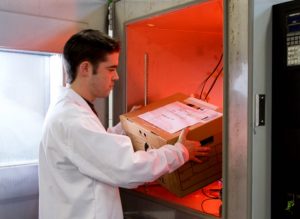 In an industry requiring the transportation and storage of millions of biologics every year, how do we avoid spoilage?
In an industry requiring the transportation and storage of millions of biologics every year, how do we avoid spoilage?
Nearly half of the world’s top-selling drugs require a temperature controlled environment to remain viable. But in an industry requiring the transportation and storage of millions of biologics every year, how do we avoid spoilage?
The Wall Street Journal recently featured an article from UPS on Cold Chain. The article highlighted the dangers associated with transporting temperature sensitive materials (including medicines) and outlined four different ways in which these risks can be mitigated including:
- Optimize packaging for known ambient profiles
- Optimize shipping modalities
- Monitor and intervene to prevent spoilage
- Analyze and optimize the Cold Chain
While all the points mentioned are very important to successful cold chain transportation, the first point stuck out to many of us here at STERIS as a large number of our test and technical support services are in the transportation arena around the viability of packaging.
All too often our engineers have been called in to rescue a packaging solution which had been an afterthought at the design stage and required drastic redesign later on in the process when it was found not to be fit for purpose.
We go into a lot more detail about the importance of considering your packaging from an early stage of development in our article about optimizing packaging solutions to avoid delays
The full Wall Street Journal, which is itself a shortened version of UPS’ own ‘Creating a Better Cold Chain’ white paper can be viewed here.
Related TechTips
A Guide to Determining the Most Appropriate Distribution Simulation for a Medical or Pharmaceutical Device
Introduction The packaging of sterile medical and pharmaceutical devices needs to ensure that the product shall function as intended and remain sterile to the point of use, from both a patient safety and regulatory requirement perspective. As part of p
Bacterial Endotoxin Testing
Pyrogens are substances that can induce a fever response in the body, and sources can be either microbial or non-microbial. The focus of this TechTip is the testing associated with a microbial pyrogen, bacterial endotoxin. Bacterial endotoxins are memb
Biological Indicator Population Verification Test
Purpose In a sterilization process where biological indicator (BI) sterility results are used as part of product release criteria, the BIs shall be procured from an approved supplier with a minimum population of test organisms defined. The population o
Screening for Adverse and Inhibitory Substances
Test method validation for adverse and/or inhibitory substances is important to ensure that the measurement of contamination on a device is not impacted by substances present in the test. Adverse substances and/or inhibitory substances (e.g. antimicrob
